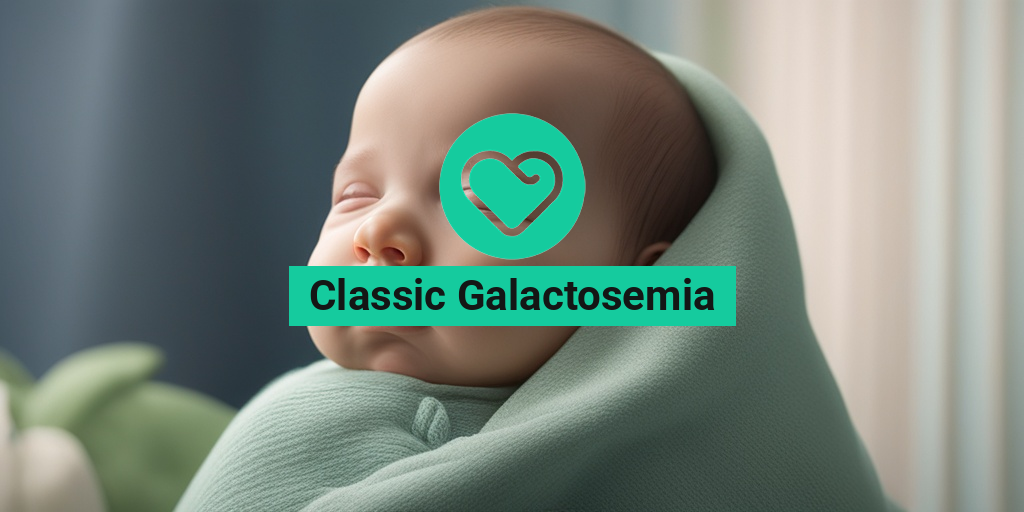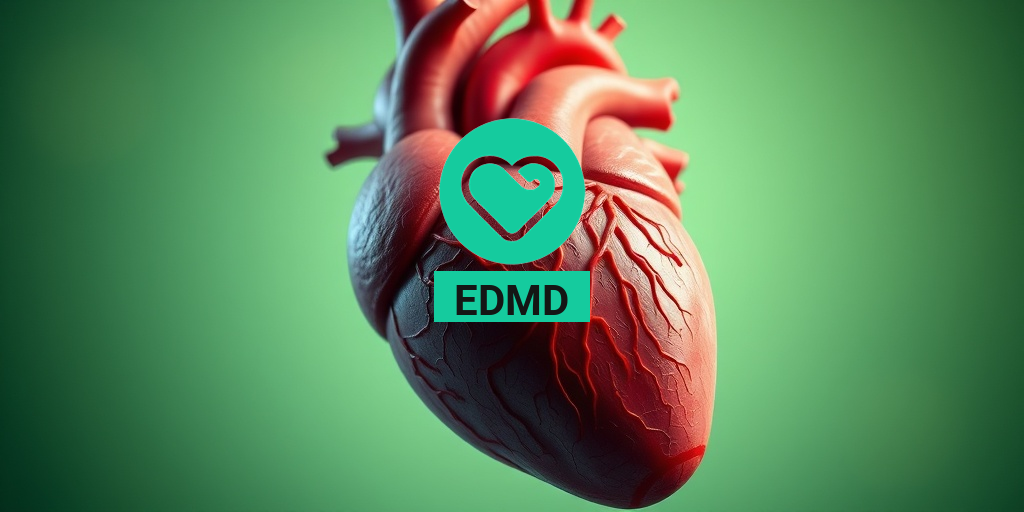What Is Classic Galactosemia?
Classic galactosemia is a rare genetic disorder that affects an individual’s ability to metabolize galactose, a type of sugar found in milk and other dairy products. It is caused by a deficiency of the enzyme galactose-1-phosphate uridyltransferase (GALT), which is necessary for the breakdown of galactose. This deficiency leads to the accumulation of toxic substances in the body, causing a range of symptoms and health problems.
Inheritance Pattern
Classic galactosemia is an autosomal recessive disorder, meaning that a person must inherit two copies of the mutated gene (one from each parent) to develop the condition. If an individual inherits only one copy of the mutated gene, they will be a carrier of the condition but will not exhibit symptoms themselves.
Prevalence
Classic galactosemia is a rare condition, affecting approximately 1 in 30,000 to 1 in 60,000 births worldwide. It is more common in certain ethnic groups, such as those of Irish, Jewish, or Eastern European descent.
Classic Galactosemia Symptoms
The symptoms of classic galactosemia typically appear within the first few days or weeks of life, after an infant consumes lactose-containing milk or formula. The severity of symptoms can vary depending on the individual and the amount of galactose consumed.
Common Symptoms
The most common symptoms of classic galactosemia include:
- Vomiting: Refusal to feed, vomiting, or spitting up after feeding
- Lethargy: Lethargy, sleepiness, or lack of energy
- Diarrhea: Frequent, loose stools or diarrhea
- Fever: Elevated body temperature
- J Jaundice: Yellowing of the skin and eyes
- Liver Damage: Enlarged liver, liver dysfunction, or liver failure
- Seizures: Convulsions or seizures, especially in severe cases
Long-term Complications
If left untreated, classic galactosemia can lead to long-term complications, including:
- Intellectual Disability: Developmental delays, intellectual disability, or learning disabilities
- Speech and Language Difficulties: Delayed speech development, speech difficulties, or language impairments
- Coordination and Balance Problems: Delayed motor skills development, coordination problems, or balance difficulties
- Osteoporosis: Weakened bones, osteoporosis, or bone fractures
It’s essential to note that early diagnosis and treatment can significantly improve outcomes for individuals with classic galactosemia. If you suspect that your child may have classic galactosemia, consult with your pediatrician or a healthcare professional for proper diagnosis and guidance.
For more information on classic galactosemia and other health topics, visit Yesil Health AI (yesilhealth.com) for evidence-based answers and resources. 🏥

Classic Galactosemia Causes and Risk Factors
Classic galactosemia is a rare genetic disorder that affects an individual’s ability to metabolize galactose, a sugar found in milk and other dairy products. The condition is caused by a deficiency of the enzyme galactose-1-phosphate uridyltransferase (GALT), which is necessary for the breakdown of galactose. In this section, we’ll delve into the causes and risk factors associated with classic galactosemia.
Inheritance Pattern
Classic galactosemia is an autosomal recessive disorder, which means that a child must inherit two copies of the mutated GALT gene (one from each parent) to develop the condition. If a child inherits only one copy of the mutated gene, they will be a carrier of the condition but will not exhibit symptoms. The risk of inheritance is 25% if both parents are carriers of the mutated gene.
Risk Factors
Certain individuals are at a higher risk of developing classic galactosemia. These include:
- Newborns: Classic galactosemia is typically diagnosed in newborns, as they are exposed to galactose through breast milk or formula.
- Family history: Individuals with a family history of classic galactosemia are at a higher risk of developing the condition.
- European ancestry: Classic galactosemia is more common in individuals of European ancestry.
How Is Classic Galactosemia Diagnosed?
Diagnosing classic galactosemia typically involves a combination of clinical evaluation, laboratory tests, and genetic analysis. Here are the steps involved in diagnosing this condition:
Clinical Evaluation
A healthcare provider will typically start by evaluating the infant’s or child’s symptoms, such as vomiting, diarrhea, and jaundice. They may also perform a physical examination to look for signs of liver damage or other complications.
Laboratory Tests
Laboratory tests may include:
- Galactosemia screening test: This test measures the level of galactose in the blood.
- Enzyme assay: This test measures the activity of the GALT enzyme in the blood.
- Genetic testing: This test involves analyzing the genes to identify mutations in the GALT gene.
Genetic Analysis
Genetic analysis may involve:
- Molecular genetic testing: This test involves analyzing the DNA to identify mutations in the GALT gene.
- Chromosomal analysis: This test involves analyzing the chromosomes to identify any abnormalities.
Early diagnosis and treatment are crucial in managing classic galactosemia. If you suspect that your child may have this condition, consult with a healthcare provider immediately. 💊

Classic Galactosemia Treatment and Management
Classic galactosemia is a rare genetic disorder that affects an individual’s ability to metabolize galactose, a sugar found in milk and other dairy products. While there is no cure for classic galactosemia, treatment and management strategies can help alleviate symptoms and improve the quality of life for those affected.
Immediate Treatment
In newborns, immediate treatment is crucial to prevent long-term damage. The primary goal is to remove galactose from the diet and reduce the risk of complications. This typically involves:
- Eliminating lactose-containing products: Breast milk or formula containing lactose must be replaced with a lactose-free alternative.
- Supportive care: Managing symptoms such as vomiting, diarrhea, and jaundice with fluids, electrolytes, and medication as needed.
Long-term Management
After the initial treatment, long-term management focuses on maintaining a galactose-restricted diet and monitoring for potential complications. This includes:
- Dietary restrictions: Avoiding galactose-containing foods and products, including milk, dairy, and some fruits and vegetables (more on this below).
- Regular check-ups: Regular health check-ups to monitor for signs of complications, such as intellectual disability, speech difficulties, and osteoporosis.
- Supplementation: In some cases, supplements like calcium, vitamin D, and galactose-free nutrients may be necessary to ensure adequate nutrition.
Dietary Restrictions for Classic Galactosemia
A galactose-restricted diet is essential for managing classic galactosemia. This involves avoiding foods and products that contain galactose, including:
- Milk and dairy products: Milk, cheese, yogurt, ice cream, and other dairy products contain lactose, which is broken down into galactose and glucose.
- Certain fruits and vegetables: Some fruits and vegetables, such as avocados, bananas, and beets, contain naturally occurring galactose.
- Processed foods: Many processed foods, including bread, cereals, and energy bars, may contain galactose or lactose.
- Medications and supplements: Some medications and supplements, such as lactose-containing tablets or capsules, may also contain galactose.
It’s essential to read food labels carefully and ask questions about ingredients and preparation methods when eating out or ordering takeout. A registered dietitian or healthcare provider can help create a personalized meal plan that meets individual nutritional needs while minimizing galactose intake. 🥗
Remember, a galactose-restricted diet is not a cure for classic galactosemia, but it can help alleviate symptoms and improve overall health. With careful management and attention to dietary restrictions, individuals with classic galactosemia can lead active, fulfilling lives. 💪

Complications of Untreated Classic Galactosemia
Classic Galactosemia is a rare genetic disorder that affects an individual’s ability to metabolize galactose, a sugar found in milk and other dairy products. If left untreated, Classic Galactosemia can lead to a range of severe and potentially life-threatening complications. In this section, we’ll explore the potential consequences of not managing this condition effectively.
Brain Damage and Intellectual Disability
One of the most significant complications of untreated Classic Galactosemia is brain damage, which can result in intellectual disability. This occurs when toxic substances, such as galactose-1-phosphate, accumulate in the brain and cause damage to brain cells. If not addressed promptly, this can lead to irreversible brain damage, resulting in intellectual disability, speech difficulties, and seizures.
Liver and Kidney Damage
Untreated Classic Galactosemia can also cause liver and kidney damage. The buildup of toxic substances can lead to liver dysfunction, jaundice, and even liver failure. Similarly, kidney damage can occur due to the accumulation of galactose-1-phosphate, leading to kidney stones, kidney failure, and other complications.
Ovarian Failure and Infertility
Women with untreated Classic Galactosemia are at risk of ovarian failure, which can lead to infertility. This is because the toxic substances can damage the ovaries, making it difficult or impossible to conceive. In some cases, women may experience premature ovarian failure, leading to early menopause.
Increased Risk of Infections
Individuals with untreated Classic Galactosemia are more susceptible to infections, particularly E. coli sepsis in neonates. This is because the body’s immune system is compromised, making it harder to fight off infections. In severe cases, these infections can be life-threatening.
Vision and Speech Problems
Untreated Classic Galactosemia can also cause vision and speech problems. The buildup of toxic substances can damage the eyes, leading to cataracts, glaucoma, and other vision problems. Speech difficulties can also occur due to brain damage and intellectual disability.
Living with Classic Galactosemia: Lifestyle Changes
While Classic Galactosemia is a lifelong condition, with the right management and lifestyle changes, individuals can lead active and healthy lives. In this section, we’ll explore the essential lifestyle changes that can help individuals with Classic Galactosemia thrive.
Dietary Restrictions
The most critical aspect of managing Classic Galactosemia is adhering to a galactose-restricted diet. This means avoiding all dairy products, including milk, cheese, and yogurt, as well as other foods that contain galactose. A registered dietitian or healthcare provider can help individuals develop a personalized diet plan that meets their nutritional needs.
Avoiding Cross-Contamination
Individuals with Classic Galactosemia should also take steps to avoid cross-contamination with galactose-containing foods. This includes using separate cooking utensils, plates, and utensils, as well as avoiding shared food preparation areas.
Regular Medical Check-Ups
Regular medical check-ups are essential for individuals with Classic Galactosemia. These check-ups can help monitor the condition, detect any potential complications early, and adjust the treatment plan as needed.
Support Networks
Living with Classic Galactosemia can be challenging, but having a strong support network can make a significant difference. Connecting with other individuals who have the condition, as well as healthcare providers and registered dietitians, can provide emotional support, practical advice, and a sense of community.
By understanding the potential complications of untreated Classic Galactosemia and making the necessary lifestyle changes, individuals can manage their condition effectively and lead healthy, active lives. 💪

Frequently Asked Questions about Classic Galactosemia
What is Classic Galactosemia?
Classic Galactosemia is a rare genetic disorder that affects the body’s ability to metabolize galactose, a sugar found in milk and other dairy products. It is caused by a deficiency of the enzyme galactose-1-phosphate uridyltransferase (GALT).
What are the symptoms of Classic Galactosemia?
The symptoms of Classic Galactosemia typically appear in the first few days of life and may include:
- Seizures
- Vomiting
- Diarrhea
- Lethargy
- J Jaundice
- Failure to thrive
How is Classic Galactosemia inherited?
Classic Galactosemia is an autosomal recessive disorder, which means that a child must inherit two copies of the mutated gene (one from each parent) to develop the condition.
What is the treatment for Classic Galactosemia?
The treatment for Classic Galactosemia involves completely eliminating galactose from the diet. This can be achieved by:
- Avoiding milk and dairy products
- Using a galactose-free formula
- Avoiding foods that contain galactose
Can Classic Galactosemia be detected during pregnancy?
Yes, Classic Galactosemia can be detected during pregnancy through prenatal testing, such as amniocentesis or chorionic villus sampling (CVS).
What is the life expectancy of someone with Classic Galactosemia?
With proper treatment, individuals with Classic Galactosemia can lead a normal life. However, if left untreated, the condition can lead to intellectual disability, speech and language difficulties, and other complications.
Is there a cure for Classic Galactosemia?
There is currently no cure for Classic Galactosemia, but researchers are exploring new treatments, such as enzyme replacement therapy and gene therapy, to improve the management of the condition.
Can breastfeeding be continued with Classic Galactosemia?
No, breastfeeding is not recommended for infants with Classic Galactosemia, as breast milk contains galactose. Instead, a galactose-free formula should be used.
What is the difference between Classic Galactosemia and Galactokinase Deficiency?
Classic Galactosemia and Galactokinase Deficiency are both genetic disorders that affect galactose metabolism, but they are caused by different enzyme deficiencies and have distinct symptoms and treatments.
How can I support someone with Classic Galactosemia?
Supporting someone with Classic Galactosemia involves being understanding and accommodating of their dietary restrictions, offering emotional support, and encouraging them to adhere to their treatment plan.
Where can I find more information about Classic Galactosemia?
More information about Classic Galactosemia can be found through organizations such as the Galactosemia Foundation, the National Institutes of Health (NIH), and other online resources.




